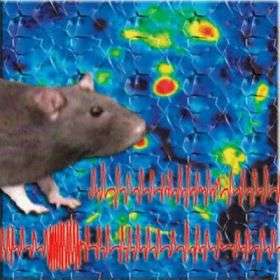How fast can a rat smell?

Using an ethologically relevant task—exploratory sniffing—Daniel Wesson and colleagues from Boston University discovered that rats are able to discriminate odors much more quickly than previously thought, in as little as 140 ms. Their results are published this week in the open-access online journal PLoS Biology.
In addition to using this natural behavioral task, the authors simultaneously used optical imaging to measure responses of neurons in the olfactory bulb, where odor signals sent from the nose are processed.
Measurements of neural responses confirm that very little processing takes place in these neurons. The timing of behavioral responses to odors shows that odor discrimination must take place before the activity pattern in the olfactory bulb has fully developed.
These results led the authors to conclude that odorant identity is likely to be encoded by the sequence of responses in the olfactory bulb (rather than the pattern of peak activation or later temporal features). Alternatively, the earliest-activated glomeruli within the olfactory bulb, which are not necessarily the most strongly activated overall, might contribute preferentially to the coding of odorant identity.
Citation: Wesson DW, Carey RM, Verhagen JV, Wachowiak M (2008) Rapid encoding and perception of novel odors in the rat. PLoS Biol 6(4): e82. doi:10.1371/journal.pbio. 0060082
Source: Public Library of Science















